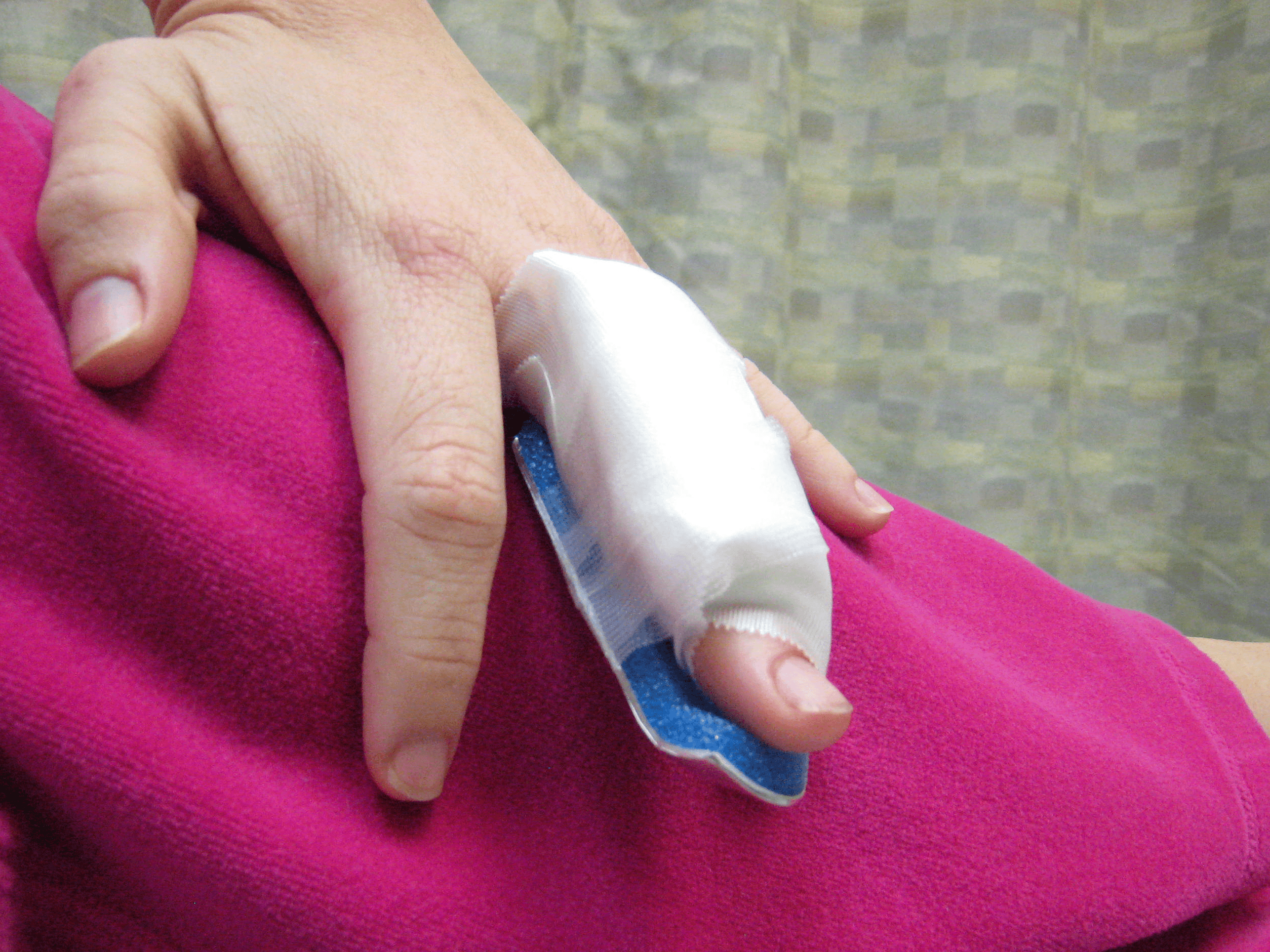With baseball season now in full swing from April to October, the injury “baseball finger,” more formally known as mallet finger, is now as relevant as ever. “Baseball finger” originates from the injury caused when an object, like a baseball, awkwardly and bends the finger backwards beyond its natural limit. However, this injury’s nickname is deceiving because it can happen with any object or sport that requires catching.
To delve more into the anatomy, mallet finger is an injury to the extensor tendon, which allows your fingers to straighten. As a refresher, tendons are flexible tissues connecting muscle to bone. When an object with high force hits the tip of your finger, it can rupture the extensor tendon or even fracture the part of the finger bone attached to the tendon. After the injury, you may experience pain, swelling, or bruising of your finger. It’s likely you won’t be able to extend your finger due to the pain.
Image Source: Naheed Choudry
For treatment options, doctors recommend applying ice to the finger and elevating it to relieve pain and swelling. If symptoms persist, there are non-surgical and surgical options depending on the severity of the injury. In most cases, non-surgical options will lead to a full recovery. The most common non-surgical treatment is with a splint, which stabilizes the finger and holds it straight to facilitate healing. Often times, the splint is worn for eight weeks. If the injury is more severe, such as part of the finger bone becoming fractured when the extensor tendon ruptured, surgery will be required. The goal of the surgery is to repair the fractures by holding the bone together. To repair the tendon, usually a tendon graft is needed, which is obtained from preexisting tissues in the body. This allows for the tendon to grow and stabilize.
Ultimately, we recommend not letting injuries, such as mallet finger, get in the way of playing sports if that’s your passion. Injuries are always part of the game, so if you love baseball, don’t let “baseball finger” deter you. If you do suffer the injury, get treated immediately, and recover fully before returning to the field.
Feature Image Source: ER Henckel by sean hobson










